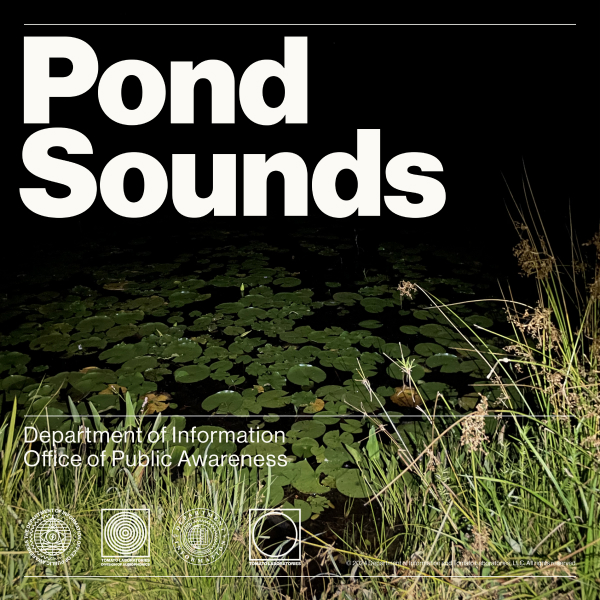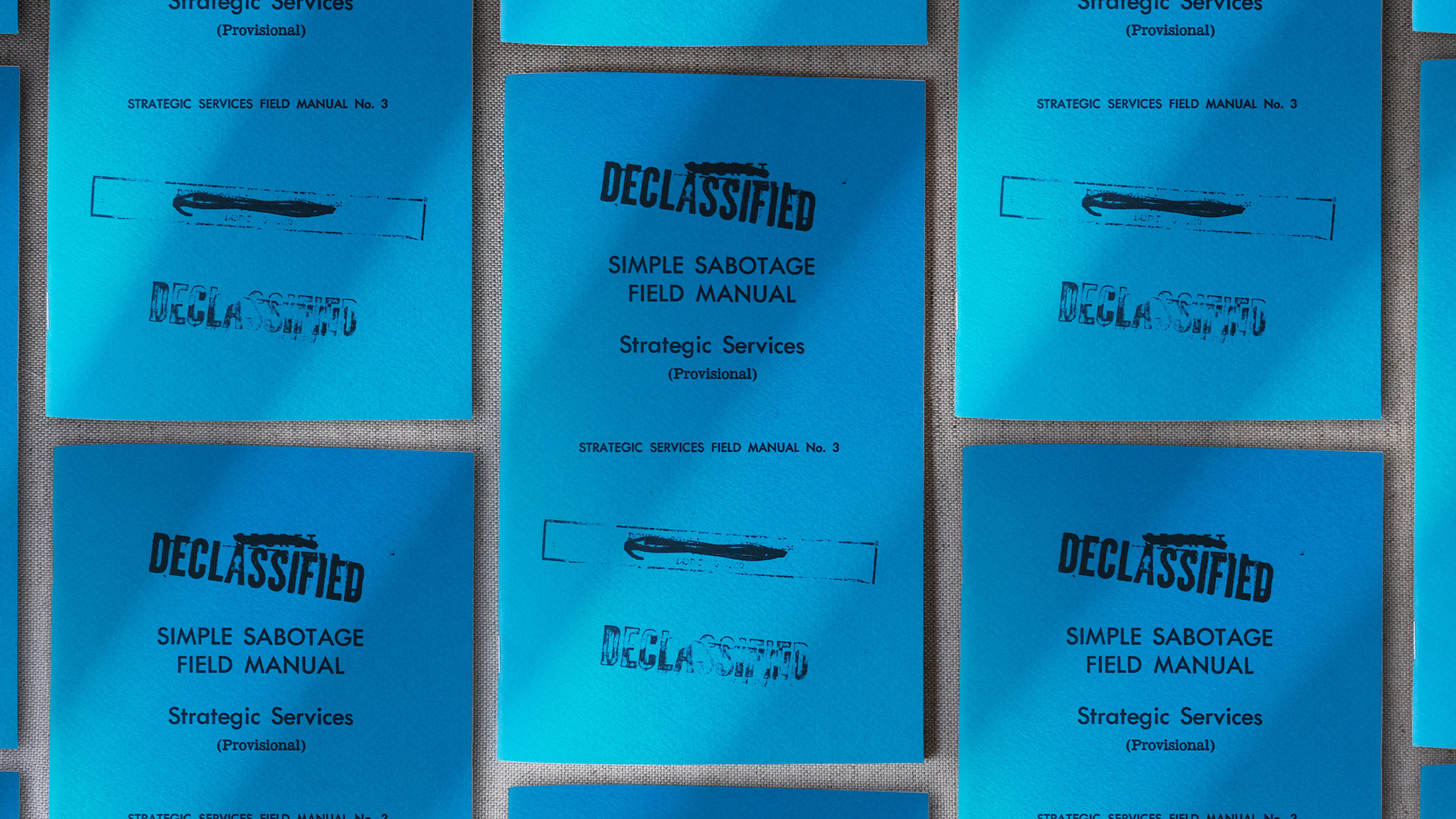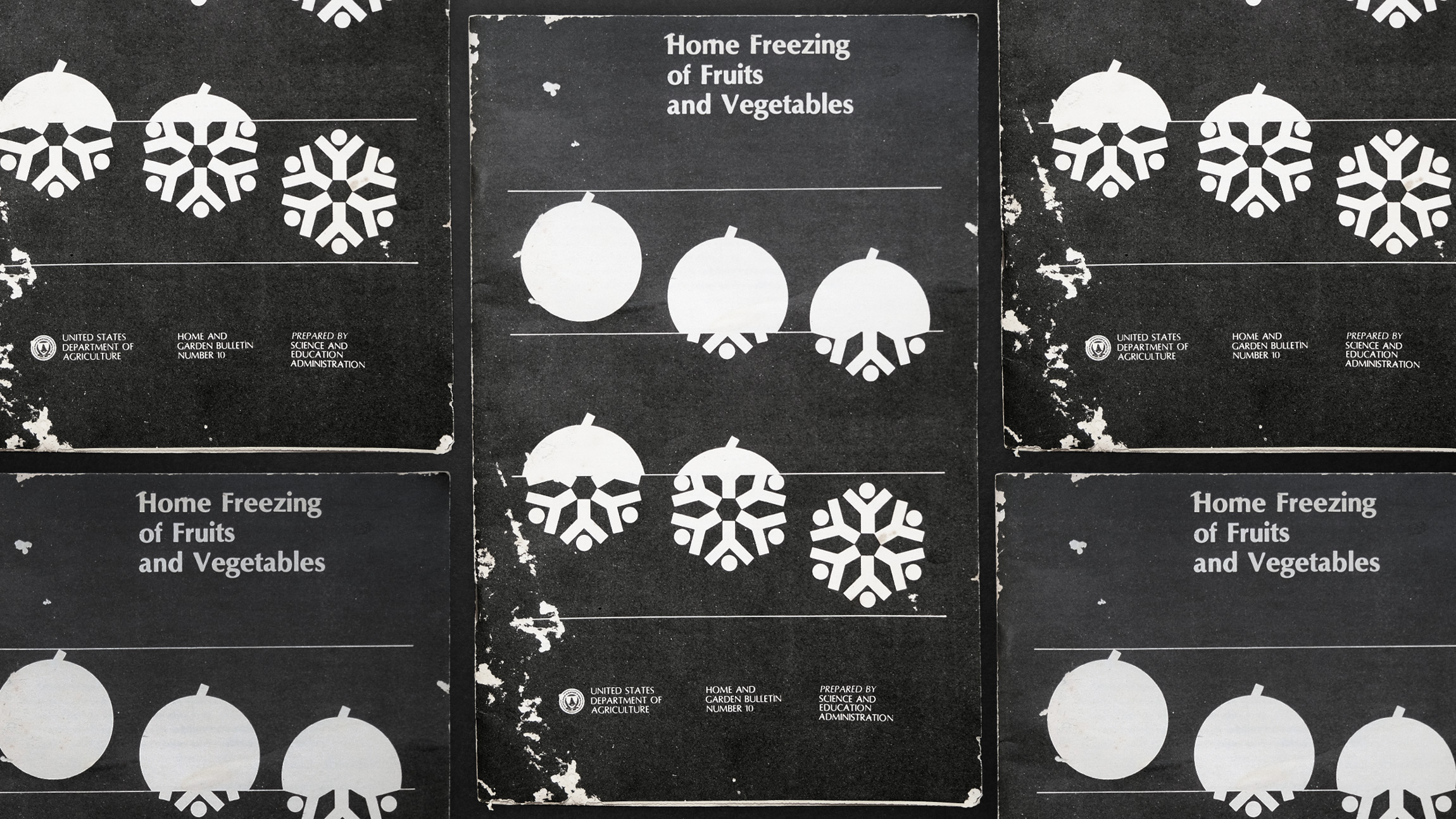We told our unpaid interns that they would not be permitted to take off work on Election Day unless they created a civic-minded, positive, art-oriented post by the end of the week. This is what they came up with. Please take a look at some of the more visually interesting voting advocacy or voting advocacy-adjacent posters and paraphernalia from the Smithsonian Archives.
Some of these graphics are huge, this is best viewed on a large monitor to truly appreciate the old paper textures on the scans.

Brian Leber / Edith Mayo / Ground Zero
While Brian Leber and Ground Zero were specifically advocating against nuclear war at the time, their posters remain disturbingly relevant today.

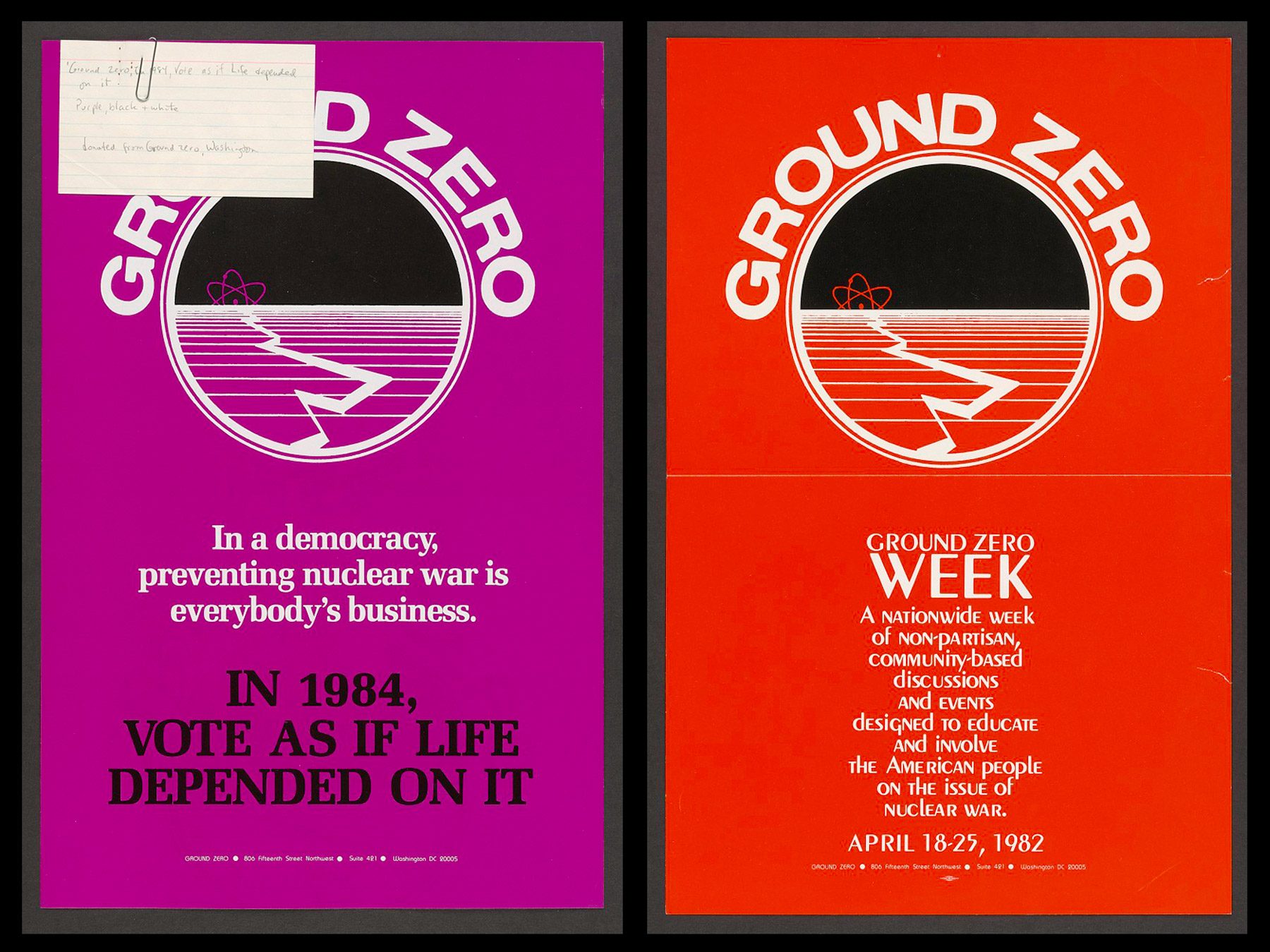

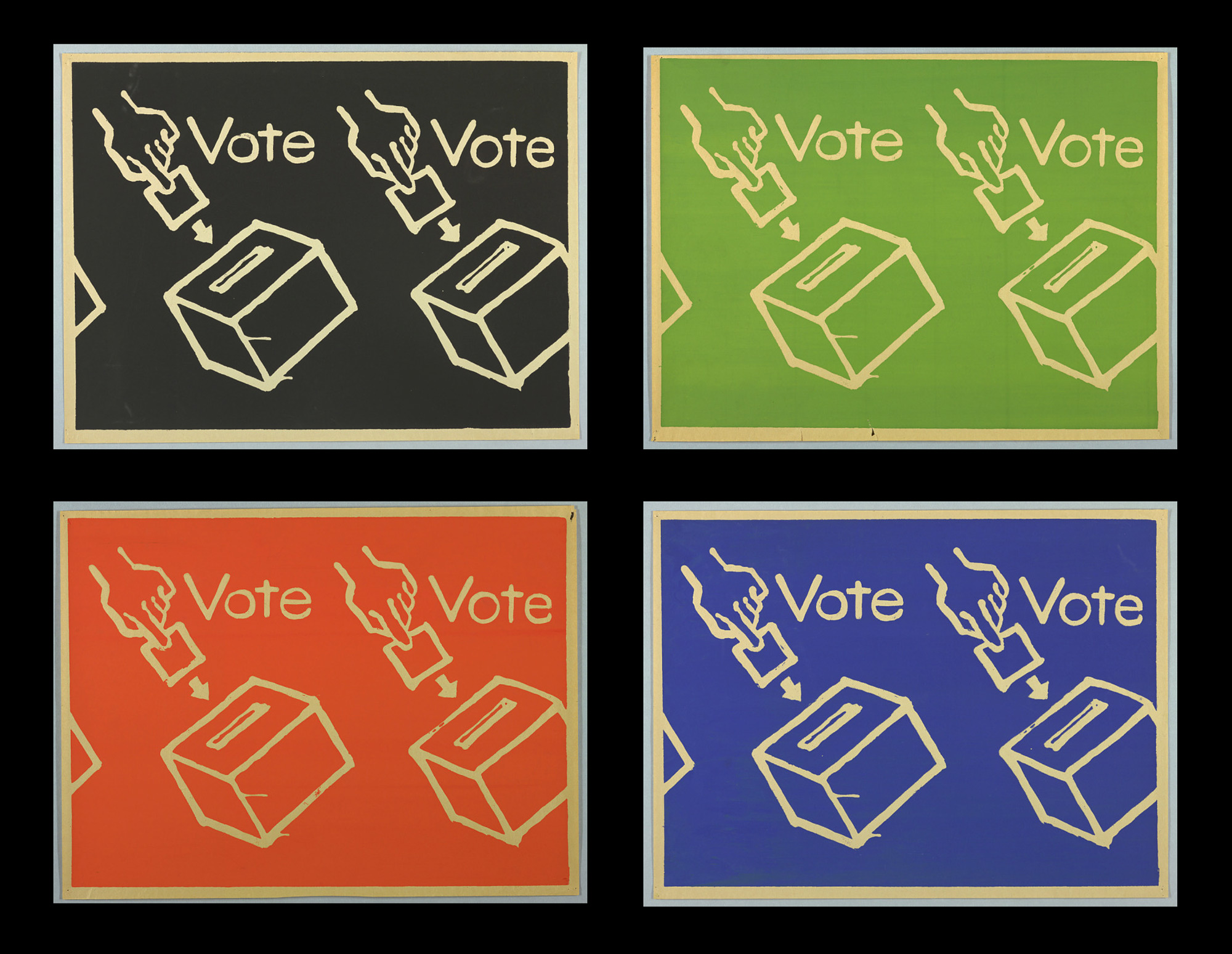
Frontlash
Frontlash (1968-1997) was a minority and youth targeted voter education organization. According to Wikipedia, it was created to increase political interest and engagement among young adults and was one of the most enduring college-aged activist groups to emerge from the 1960s. Some of the more visually interesting voter engagement posters in the Smithsonian Archives are credited to 70s-era Frontlash.


REGISTER AND VOTE! Your mother would want you to. Sponsored by Frontlash, a nonpartisan, nonprofit voter education organization. 815 – 16th Street, N.W. – Washington, D.C. 20006
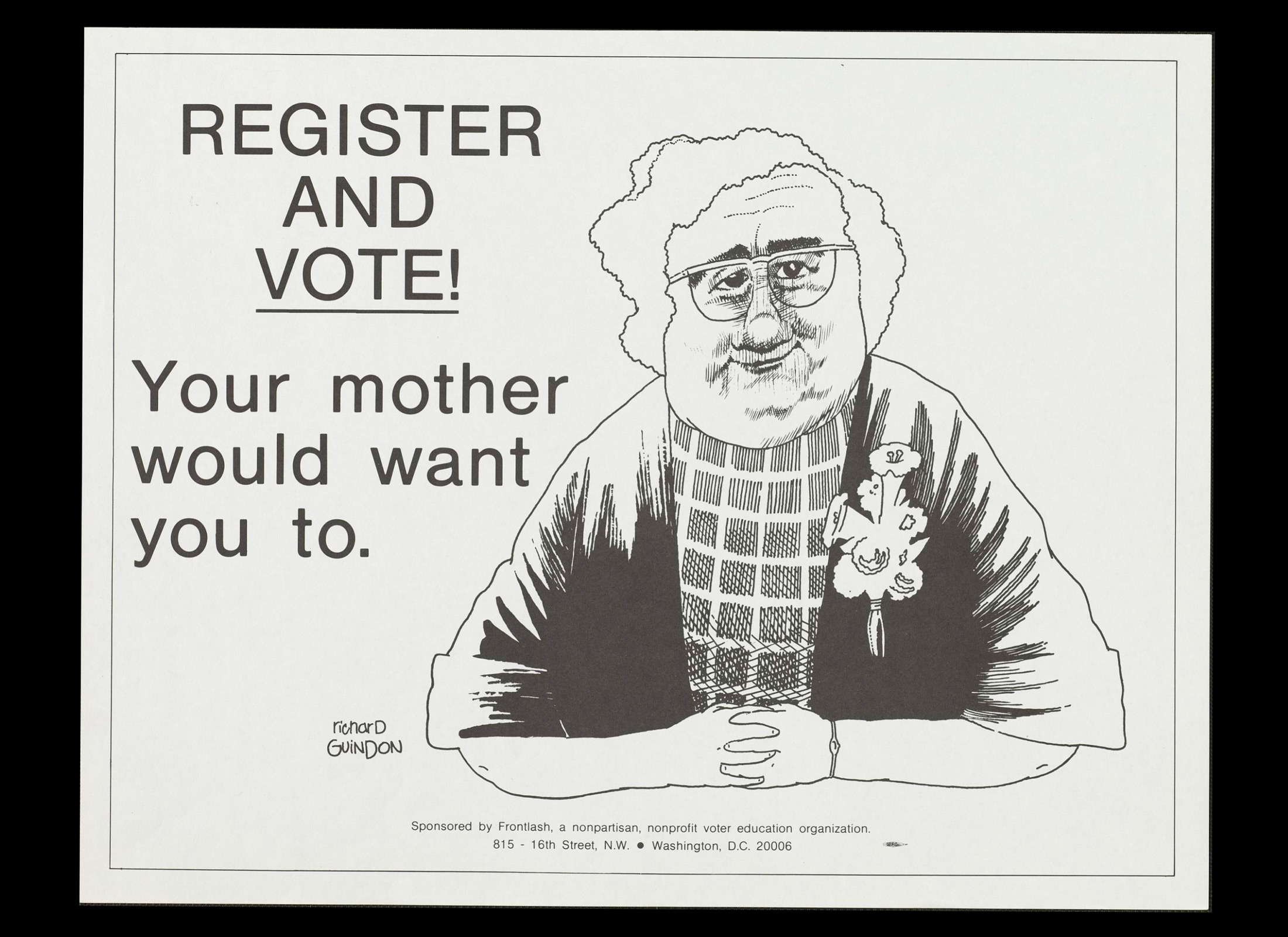
Youth Citizenship Fund, Inc.
There isn’t much information online about Youth Citizenship Fund, Inc. It may have only existed for a couple of years in the early 1970s but it produced and is credited with some really excellent and colorful typographic and geometrically-driven posters. According to a 1971 New York Times article: “The Youth Citizenship Fund…is a non‐partisan organization based in Washington. …the fund is focusing on large metropolitan areas rather than campuses. Carroll Ladt, the 23‐year‐old director, said its next project would be to register the secretaries and young executives working in Chicago’s Merchandise Mart”




McQ, Inc.
We aren’t sure who or what “McQ, Inc.” was but they were apparently really obsessed with crying eagles and smooth gradients in the early 1970s.
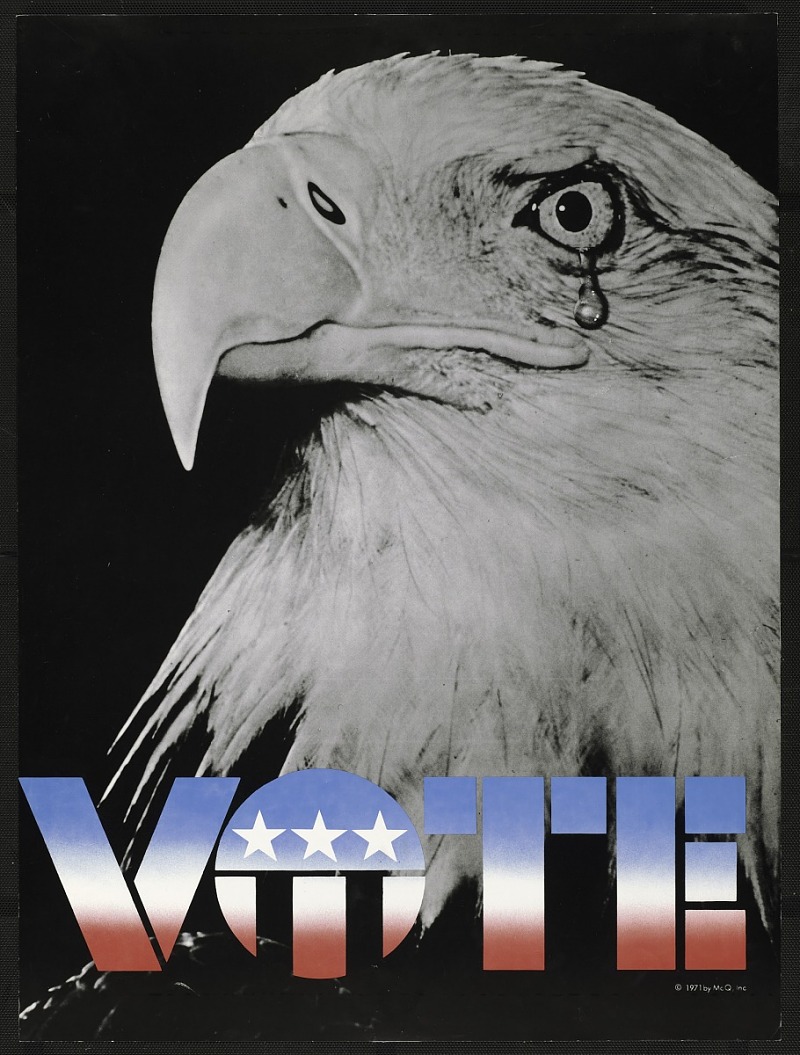

The archival description of this beautiful student poster from 1971 states “[the] butterfly emerging from the cocoon is meant to signify the emerging power of the youth vote in the United States.”

Bad officials are elected by good citizens who do not vote.
Jennifer Sterling. Poster for VOTE. undated. Cooper Hewitt, Smithsonian Design Museum
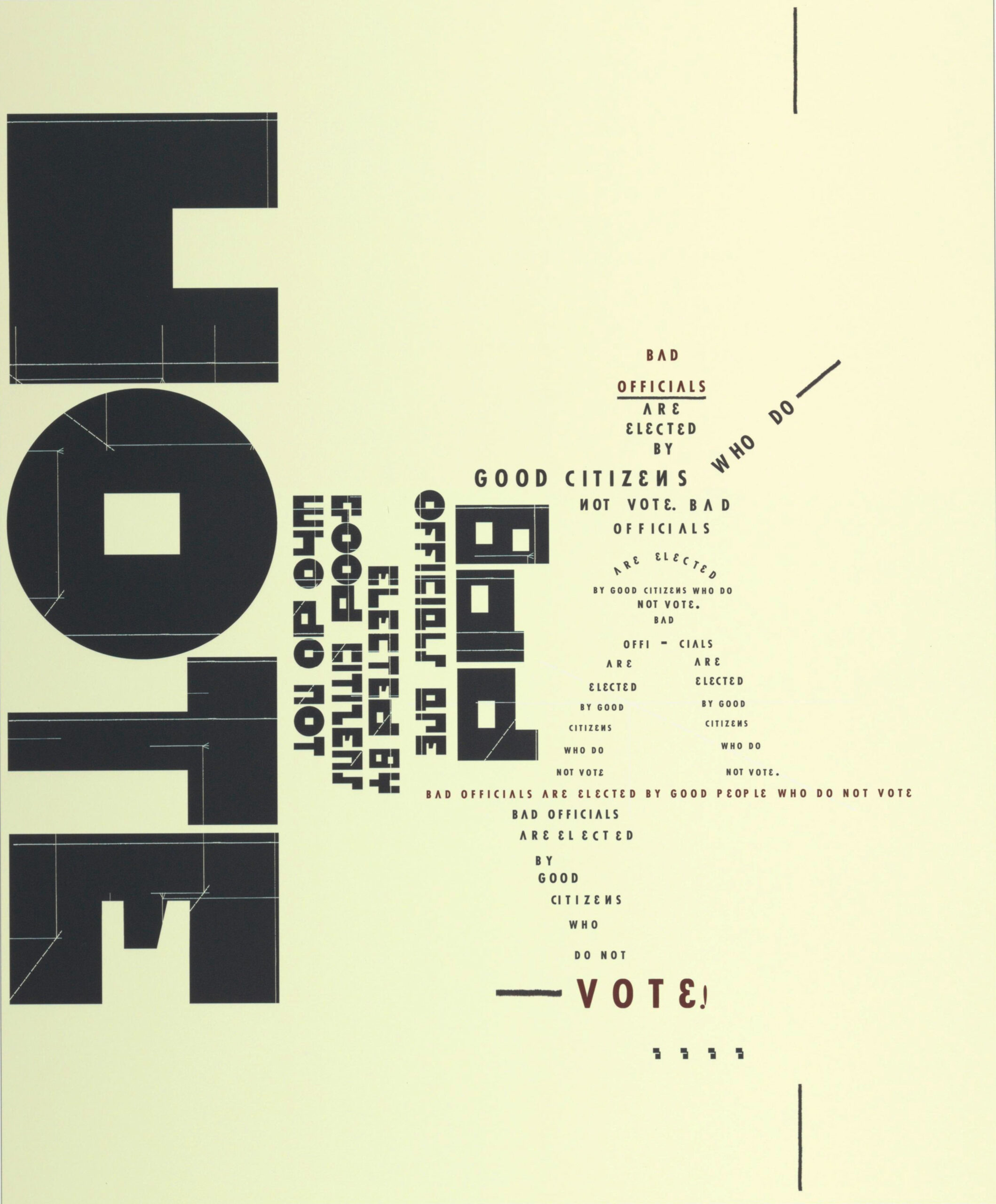
“It is no credit to our democracy when four out of every ten persons forfeit the privilege of expressing their convictions about the candidates and the issues of a national election.
Your vote counts! Victories in many elections are often determined by the barest of margins. For example, one prominent Senator won the post he now occupies by a margin of only 87 votes, with 988,295 cast.
To vote is a right and a privilege. To cast your vote intelligently is a duty.”

Postcards, Buttons, Pins, and Other Paraphernalia

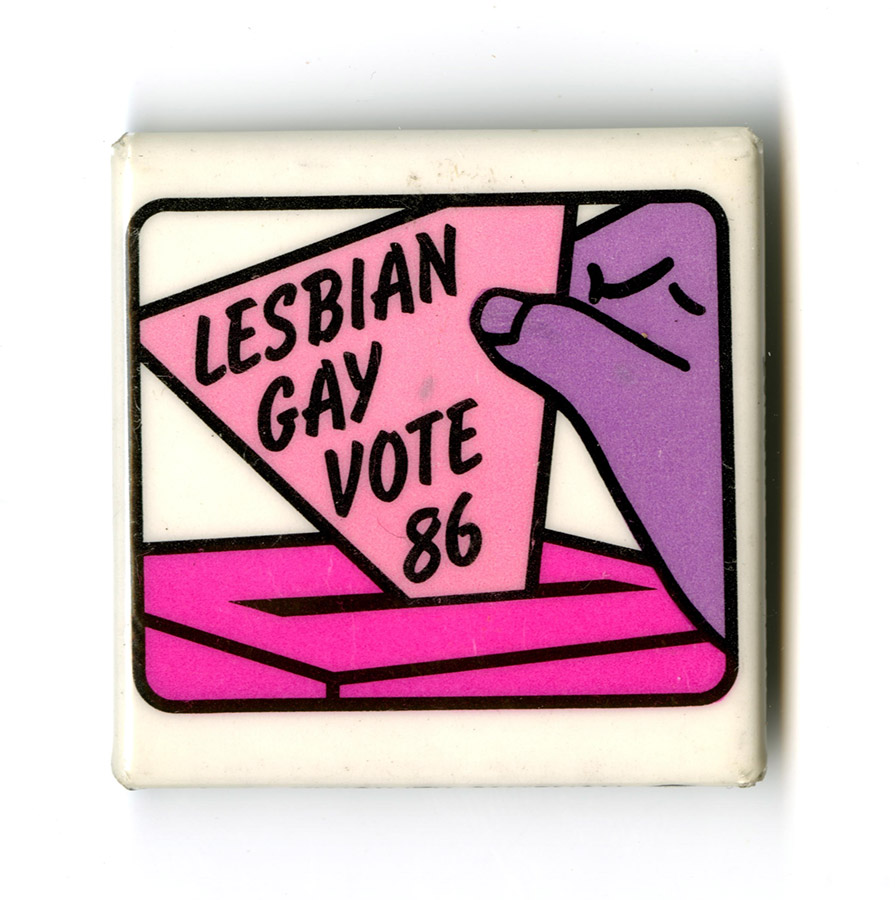
A man named Howard Croft collected and donated more than 200 buttons and/or pins to the Anacostia (a neighborhood in D.C.) Community Museum. We don’t have time to look at them all but someone should definitely do it!
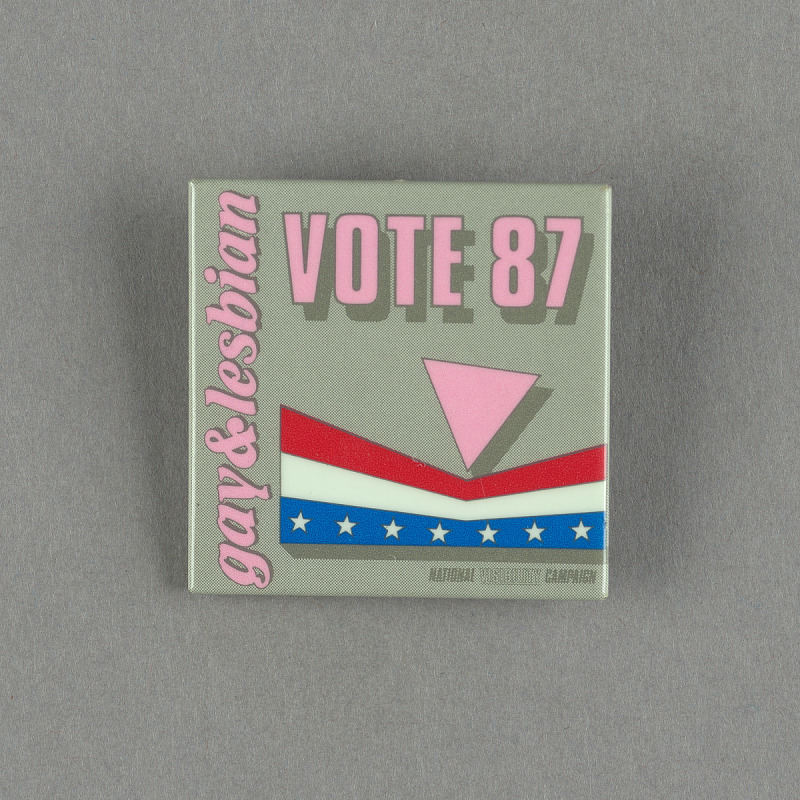



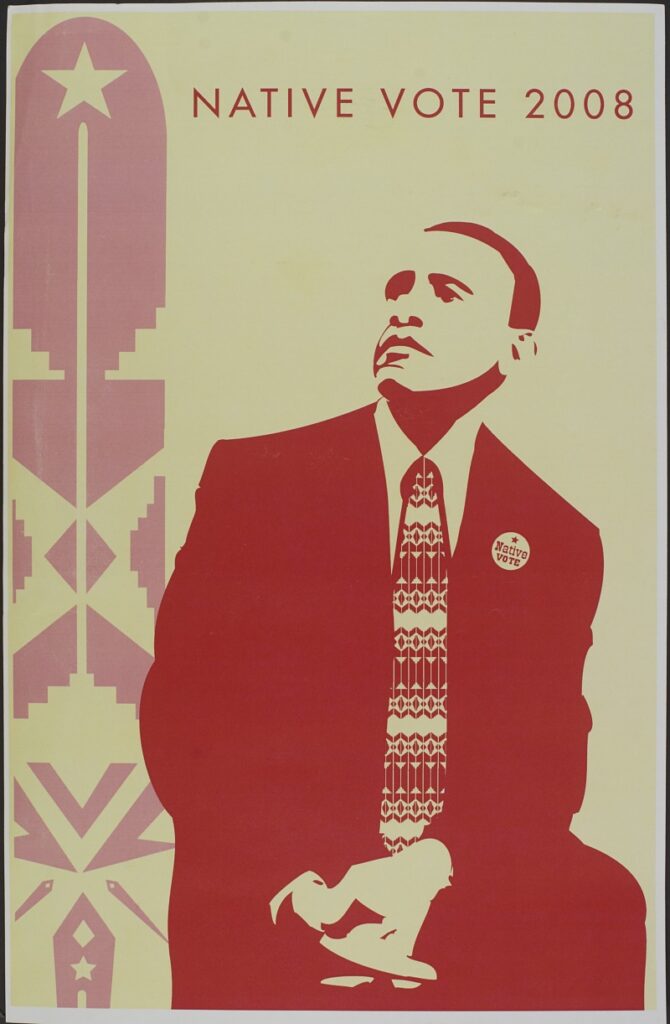

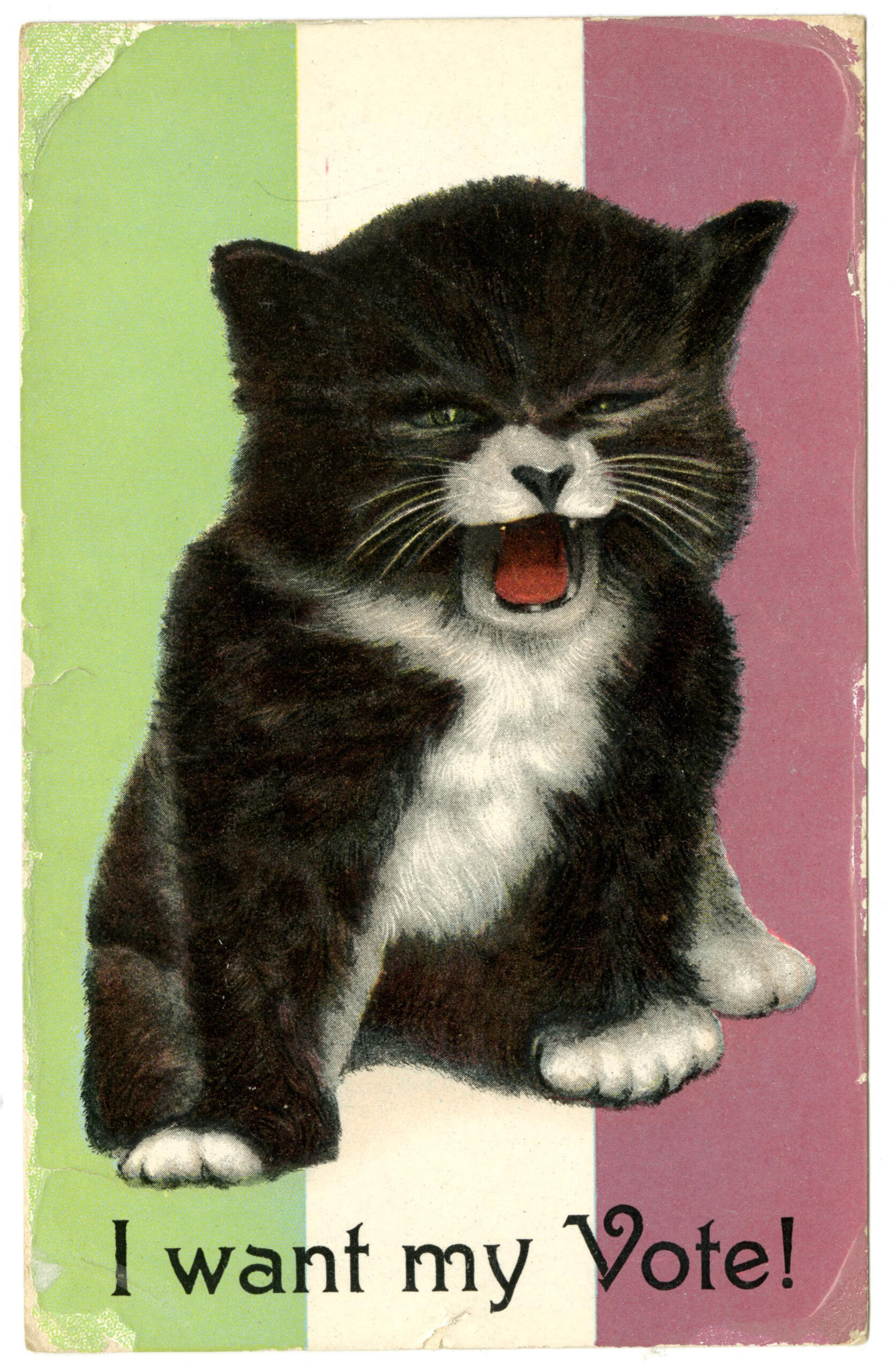
The cat seen on the “I want my Vote” postcard is apparently standing in front of the green, white, and purple striped flag of the British suffrage movement. According to an obscure webpage on the John Hopkins University server, this was allegedly anti-suffrage.

These were, of course, just some of the more interesting artifacts our unpaid interns dug up. For hours of wholesome, civic-minded fun we encourage our readers to dig through the entire (very loose) archive over at the Smithsonian.
And please remember to vote!

